-
Food Additives Market, BY Type (USD Billion) Preservatives
-
Flavor Enhancers
-
Coloring Agents
-
Sweeteners
-
Emulsifiers
-
Food Additives Market, BY Functionality (USD Billion) Preservation
-
Flavoring
-
Coloring
-
Texture Improvement
-
Nutritional Enhancement
-
Food Additives Market, BY Source (USD Billion) Natural
-
Synthetic
-
Biotechnological
-
Food Additives Market, BY End Use Industry (USD Billion) Food Beverages
-
Pharmaceuticals
-
Cosmetics
-
Animal Feed
-
Food Additives Market, BY Regional (USD Billion) North AmericaUS
-
Canada
-
EuropeGermany
-
UK
-
France
-
Russia
-
Italy
-
Spain
-
Rest of Europe
-
APACChina
-
India
-
Japan
-
South Korea
-
Malaysia
-
Thailand
-
Indonesia
-
Rest of APAC
-
South AmericaBrazil
-
Mexico
-
Argentina
-
Rest of South America
-
MEAGCC Countries
-
South Africa
-
Rest of MEA
-
Competitive Landscape Overview
-
Competitive Analysis
-
Market share Analysis
-
Major Growth Strategy in the Food Additives Market
-
Competitive Benchmarking
-
Leading Players in Terms of Number of Developments in the Food Additives Market
-
Key developments and growth strategiesNew Product Launch/Service Deployment
-
Merger Acquisitions
-
Joint Ventures
-
Major Players Financial MatrixSales and Operating Income
-
Major Players RD Expenditure. 2023
-
Company Profiles Kerry GroupFinancial Overview
-
Products Offered
-
Key Developments
-
SWOT Analysis
-
Key Strategies
-
NaturexFinancial Overview
-
Products Offered
-
Key Developments
-
SWOT Analysis
-
Key Strategies
-
Archer Daniels MidlandFinancial Overview
-
Products Offered
-
Key Developments
-
SWOT Analysis
-
Key Strategies
-
Wilmar InternationalFinancial Overview
-
Products Offered
-
Key Developments
-
SWOT Analysis
-
Key Strategies
-
CargillFinancial Overview
-
Products Offered
-
Key Developments
-
SWOT Analysis
-
Key Strategies
-
Sensient TechnologiesFinancial Overview
-
Products Offered
-
Key Developments
-
SWOT Analysis
-
Key Strategies
-
IngredionFinancial Overview
-
Products Offered
-
Key Developments
-
SWOT Analysis
-
Key Strategies
-
Tate and LyleFinancial Overview
-
Products Offered
-
Key Developments
-
SWOT Analysis
-
Key Strategies
-
GivaudanFinancial Overview
-
Products Offered
-
Key Developments
-
SWOT Analysis
-
Key Strategies
-
DSMFinancial Overview
-
Products Offered
-
Key Developments
-
SWOT Analysis
-
Key Strategies
-
DowFinancial Overview
-
Products Offered
-
Key Developments
-
SWOT Analysis
-
Key Strategies
-
AcetoFinancial Overview
-
Products Offered
-
Key Developments
-
SWOT Analysis
-
Key Strategies
-
BASFFinancial Overview
-
Products Offered
-
Key Developments
-
SWOT Analysis
-
Key Strategies
-
FrutaromFinancial Overview
-
Products Offered
-
Key Developments
-
SWOT Analysis
-
Key Strategies
-
AjinomotoFinancial Overview
-
Products Offered
-
Key Developments
-
SWOT Analysis
-
Key Strategies
-
Appendix References
-
Related ReportsLIST Of tables
-
LIST OF ASSUMPTIONS
-
North America Food Additives Market SIZE ESTIMATES & FORECAST, BY TYPE, 2019-2035 (USD Billions)
-
North America Food Additives Market SIZE ESTIMATES & FORECAST, BY FUNCTIONALITY, 2019-2035 (USD Billions)
-
North America Food Additives Market SIZE ESTIMATES & FORECAST, BY SOURCE, 2019-2035 (USD Billions)
-
North America Food Additives Market SIZE ESTIMATES & FORECAST, BY END USE INDUSTRY, 2019-2035 (USD Billions)
-
North America Food Additives Market SIZE ESTIMATES & FORECAST, BY REGIONAL, 2019-2035 (USD Billions)
-
US Food Additives Market SIZE ESTIMATES & FORECAST, BY TYPE, 2019-2035 (USD Billions)
-
US Food Additives Market SIZE ESTIMATES & FORECAST, BY FUNCTIONALITY, 2019-2035 (USD Billions)
-
US Food Additives Market SIZE ESTIMATES & FORECAST, BY SOURCE, 2019-2035 (USD Billions)
-
US Food Additives Market SIZE ESTIMATES & FORECAST, BY END USE INDUSTRY, 2019-2035 (USD Billions)
-
US Food Additives Market SIZE ESTIMATES & FORECAST, BY REGIONAL, 2019-2035 (USD Billions)
-
Canada Food Additives Market SIZE ESTIMATES & FORECAST, BY TYPE, 2019-2035 (USD Billions)
-
Canada Food Additives Market SIZE ESTIMATES & FORECAST, BY FUNCTIONALITY, 2019-2035 (USD Billions)
-
Canada Food Additives Market SIZE ESTIMATES & FORECAST, BY SOURCE, 2019-2035 (USD Billions)
-
Canada Food Additives Market SIZE ESTIMATES & FORECAST, BY END USE INDUSTRY, 2019-2035 (USD Billions)
-
Canada Food Additives Market SIZE ESTIMATES & FORECAST, BY REGIONAL, 2019-2035 (USD Billions)
-
Europe Food Additives Market SIZE ESTIMATES & FORECAST, BY TYPE, 2019-2035 (USD Billions)
-
Europe Food Additives Market SIZE ESTIMATES & FORECAST, BY FUNCTIONALITY, 2019-2035 (USD Billions)
-
Europe Food Additives Market SIZE ESTIMATES & FORECAST, BY SOURCE, 2019-2035 (USD Billions)
-
Europe Food Additives Market SIZE ESTIMATES & FORECAST, BY END USE INDUSTRY, 2019-2035 (USD Billions)
-
Europe Food Additives Market SIZE ESTIMATES & FORECAST, BY REGIONAL, 2019-2035 (USD Billions)
-
Germany Food Additives Market SIZE ESTIMATES & FORECAST, BY TYPE, 2019-2035 (USD Billions)
-
Germany Food Additives Market SIZE ESTIMATES & FORECAST, BY FUNCTIONALITY, 2019-2035 (USD Billions)
-
Germany Food Additives Market SIZE ESTIMATES & FORECAST, BY SOURCE, 2019-2035 (USD Billions)
-
Germany Food Additives Market SIZE ESTIMATES & FORECAST, BY END USE INDUSTRY, 2019-2035 (USD Billions)
-
Germany Food Additives Market SIZE ESTIMATES & FORECAST, BY REGIONAL, 2019-2035 (USD Billions)
-
UK Food Additives Market SIZE ESTIMATES & FORECAST, BY TYPE, 2019-2035 (USD Billions)
-
UK Food Additives Market SIZE ESTIMATES & FORECAST, BY FUNCTIONALITY, 2019-2035 (USD Billions)
-
UK Food Additives Market SIZE ESTIMATES & FORECAST, BY SOURCE, 2019-2035 (USD Billions)
-
UK Food Additives Market SIZE ESTIMATES & FORECAST, BY END USE INDUSTRY, 2019-2035 (USD Billions)
-
UK Food Additives Market SIZE ESTIMATES & FORECAST, BY REGIONAL, 2019-2035 (USD Billions)
-
France Food Additives Market SIZE ESTIMATES & FORECAST, BY TYPE, 2019-2035 (USD Billions)
-
France Food Additives Market SIZE ESTIMATES & FORECAST, BY FUNCTIONALITY, 2019-2035 (USD Billions)
-
France Food Additives Market SIZE ESTIMATES & FORECAST, BY SOURCE, 2019-2035 (USD Billions)
-
France Food Additives Market SIZE ESTIMATES & FORECAST, BY END USE INDUSTRY, 2019-2035 (USD Billions)
-
France Food Additives Market SIZE ESTIMATES & FORECAST, BY REGIONAL, 2019-2035 (USD Billions)
-
Russia Food Additives Market SIZE ESTIMATES & FORECAST, BY TYPE, 2019-2035 (USD Billions)
-
Russia Food Additives Market SIZE ESTIMATES & FORECAST, BY FUNCTIONALITY, 2019-2035 (USD Billions)
-
Russia Food Additives Market SIZE ESTIMATES & FORECAST, BY SOURCE, 2019-2035 (USD Billions)
-
Russia Food Additives Market SIZE ESTIMATES & FORECAST, BY END USE INDUSTRY, 2019-2035 (USD Billions)
-
Russia Food Additives Market SIZE ESTIMATES & FORECAST, BY REGIONAL, 2019-2035 (USD Billions)
-
Italy Food Additives Market SIZE ESTIMATES & FORECAST, BY TYPE, 2019-2035 (USD Billions)
-
Italy Food Additives Market SIZE ESTIMATES & FORECAST, BY FUNCTIONALITY, 2019-2035 (USD Billions)
-
Italy Food Additives Market SIZE ESTIMATES & FORECAST, BY SOURCE, 2019-2035 (USD Billions)
-
Italy Food Additives Market SIZE ESTIMATES & FORECAST, BY END USE INDUSTRY, 2019-2035 (USD Billions)
-
Italy Food Additives Market SIZE ESTIMATES & FORECAST, BY REGIONAL, 2019-2035 (USD Billions)
-
Spain Food Additives Market SIZE ESTIMATES & FORECAST, BY TYPE, 2019-2035 (USD Billions)
-
Spain Food Additives Market SIZE ESTIMATES & FORECAST, BY FUNCTIONALITY, 2019-2035 (USD Billions)
-
Spain Food Additives Market SIZE ESTIMATES & FORECAST, BY SOURCE, 2019-2035 (USD Billions)
-
Spain Food Additives Market SIZE ESTIMATES & FORECAST, BY END USE INDUSTRY, 2019-2035 (USD Billions)
-
Spain Food Additives Market SIZE ESTIMATES & FORECAST, BY REGIONAL, 2019-2035 (USD Billions)
-
Rest of Europe Food Additives Market SIZE ESTIMATES & FORECAST, BY TYPE, 2019-2035 (USD Billions)
-
Rest of Europe Food Additives Market SIZE ESTIMATES & FORECAST, BY FUNCTIONALITY, 2019-2035 (USD Billions)
-
Rest of Europe Food Additives Market SIZE ESTIMATES & FORECAST, BY SOURCE, 2019-2035 (USD Billions)
-
Rest of Europe Food Additives Market SIZE ESTIMATES & FORECAST, BY END USE INDUSTRY, 2019-2035 (USD Billions)
-
Rest of Europe Food Additives Market SIZE ESTIMATES & FORECAST, BY REGIONAL, 2019-2035 (USD Billions)
-
APAC Food Additives Market SIZE ESTIMATES & FORECAST, BY TYPE, 2019-2035 (USD Billions)
-
APAC Food Additives Market SIZE ESTIMATES & FORECAST, BY FUNCTIONALITY, 2019-2035 (USD Billions)
-
APAC Food Additives Market SIZE ESTIMATES & FORECAST, BY SOURCE, 2019-2035 (USD Billions)
-
APAC Food Additives Market SIZE ESTIMATES & FORECAST, BY END USE INDUSTRY, 2019-2035 (USD Billions)
-
APAC Food Additives Market SIZE ESTIMATES & FORECAST, BY REGIONAL, 2019-2035 (USD Billions)
-
China Food Additives Market SIZE ESTIMATES & FORECAST, BY TYPE, 2019-2035 (USD Billions)
-
China Food Additives Market SIZE ESTIMATES & FORECAST, BY FUNCTIONALITY, 2019-2035 (USD Billions)
-
China Food Additives Market SIZE ESTIMATES & FORECAST, BY SOURCE, 2019-2035 (USD Billions)
-
China Food Additives Market SIZE ESTIMATES & FORECAST, BY END USE INDUSTRY, 2019-2035 (USD Billions)
-
China Food Additives Market SIZE ESTIMATES & FORECAST, BY REGIONAL, 2019-2035 (USD Billions)
-
India Food Additives Market SIZE ESTIMATES & FORECAST, BY TYPE, 2019-2035 (USD Billions)
-
India Food Additives Market SIZE ESTIMATES & FORECAST, BY FUNCTIONALITY, 2019-2035 (USD Billions)
-
India Food Additives Market SIZE ESTIMATES & FORECAST, BY SOURCE, 2019-2035 (USD Billions)
-
India Food Additives Market SIZE ESTIMATES & FORECAST, BY END USE INDUSTRY, 2019-2035 (USD Billions)
-
India Food Additives Market SIZE ESTIMATES & FORECAST, BY REGIONAL, 2019-2035 (USD Billions)
-
Japan Food Additives Market SIZE ESTIMATES & FORECAST, BY TYPE, 2019-2035 (USD Billions)
-
Japan Food Additives Market SIZE ESTIMATES & FORECAST, BY FUNCTIONALITY, 2019-2035 (USD Billions)
-
Japan Food Additives Market SIZE ESTIMATES & FORECAST, BY SOURCE, 2019-2035 (USD Billions)
-
Japan Food Additives Market SIZE ESTIMATES & FORECAST, BY END USE INDUSTRY, 2019-2035 (USD Billions)
-
Japan Food Additives Market SIZE ESTIMATES & FORECAST, BY REGIONAL, 2019-2035 (USD Billions)
-
South Korea Food Additives Market SIZE ESTIMATES & FORECAST, BY TYPE, 2019-2035 (USD Billions)
-
South Korea Food Additives Market SIZE ESTIMATES & FORECAST, BY FUNCTIONALITY, 2019-2035 (USD Billions)
-
South Korea Food Additives Market SIZE ESTIMATES & FORECAST, BY SOURCE, 2019-2035 (USD Billions)
-
South Korea Food Additives Market SIZE ESTIMATES & FORECAST, BY END USE INDUSTRY, 2019-2035 (USD Billions)
-
South Korea Food Additives Market SIZE ESTIMATES & FORECAST, BY REGIONAL, 2019-2035 (USD Billions)
-
Malaysia Food Additives Market SIZE ESTIMATES & FORECAST, BY TYPE, 2019-2035 (USD Billions)
-
Malaysia Food Additives Market SIZE ESTIMATES & FORECAST, BY FUNCTIONALITY, 2019-2035 (USD Billions)
-
Malaysia Food Additives Market SIZE ESTIMATES & FORECAST, BY SOURCE, 2019-2035 (USD Billions)
-
Malaysia Food Additives Market SIZE ESTIMATES & FORECAST, BY END USE INDUSTRY, 2019-2035 (USD Billions)
-
Malaysia Food Additives Market SIZE ESTIMATES & FORECAST, BY REGIONAL, 2019-2035 (USD Billions)
-
Thailand Food Additives Market SIZE ESTIMATES & FORECAST, BY TYPE, 2019-2035 (USD Billions)
-
Thailand Food Additives Market SIZE ESTIMATES & FORECAST, BY FUNCTIONALITY, 2019-2035 (USD Billions)
-
Thailand Food Additives Market SIZE ESTIMATES & FORECAST, BY SOURCE, 2019-2035 (USD Billions)
-
Thailand Food Additives Market SIZE ESTIMATES & FORECAST, BY END USE INDUSTRY, 2019-2035 (USD Billions)
-
Thailand Food Additives Market SIZE ESTIMATES & FORECAST, BY REGIONAL, 2019-2035 (USD Billions)
-
Indonesia Food Additives Market SIZE ESTIMATES & FORECAST, BY TYPE, 2019-2035 (USD Billions)
-
Indonesia Food Additives Market SIZE ESTIMATES & FORECAST, BY FUNCTIONALITY, 2019-2035 (USD Billions)
-
Indonesia Food Additives Market SIZE ESTIMATES & FORECAST, BY SOURCE, 2019-2035 (USD Billions)
-
Indonesia Food Additives Market SIZE ESTIMATES & FORECAST, BY END USE INDUSTRY, 2019-2035 (USD Billions)
-
Indonesia Food Additives Market SIZE ESTIMATES & FORECAST, BY REGIONAL, 2019-2035 (USD Billions)
-
Rest of APAC Food Additives Market SIZE ESTIMATES & FORECAST, BY TYPE, 2019-2035 (USD Billions)
-
Rest of APAC Food Additives Market SIZE ESTIMATES & FORECAST, BY FUNCTIONALITY, 2019-2035 (USD Billions)
-
Rest of APAC Food Additives Market SIZE ESTIMATES & FORECAST, BY SOURCE, 2019-2035 (USD Billions)
-
Rest of APAC Food Additives Market SIZE ESTIMATES & FORECAST, BY END USE INDUSTRY, 2019-2035 (USD Billions)
-
Rest of APAC Food Additives Market SIZE ESTIMATES & FORECAST, BY REGIONAL, 2019-2035 (USD Billions)
-
South America Food Additives Market SIZE ESTIMATES & FORECAST, BY TYPE, 2019-2035 (USD Billions)
-
South America Food Additives Market SIZE ESTIMATES & FORECAST, BY FUNCTIONALITY, 2019-2035 (USD Billions)
-
South America Food Additives Market SIZE ESTIMATES & FORECAST, BY SOURCE, 2019-2035 (USD Billions)
-
South America Food Additives Market SIZE ESTIMATES & FORECAST, BY END USE INDUSTRY, 2019-2035 (USD Billions)
-
South America Food Additives Market SIZE ESTIMATES & FORECAST, BY REGIONAL, 2019-2035 (USD Billions)
-
Brazil Food Additives Market SIZE ESTIMATES & FORECAST, BY TYPE, 2019-2035 (USD Billions)
-
Brazil Food Additives Market SIZE ESTIMATES & FORECAST, BY FUNCTIONALITY, 2019-2035 (USD Billions)
-
Brazil Food Additives Market SIZE ESTIMATES & FORECAST, BY SOURCE, 2019-2035 (USD Billions)
-
Brazil Food Additives Market SIZE ESTIMATES & FORECAST, BY END USE INDUSTRY, 2019-2035 (USD Billions)
-
Brazil Food Additives Market SIZE ESTIMATES & FORECAST, BY REGIONAL, 2019-2035 (USD Billions)
-
Mexico Food Additives Market SIZE ESTIMATES & FORECAST, BY TYPE, 2019-2035 (USD Billions)
-
Mexico Food Additives Market SIZE ESTIMATES & FORECAST, BY FUNCTIONALITY, 2019-2035 (USD Billions)
-
Mexico Food Additives Market SIZE ESTIMATES & FORECAST, BY SOURCE, 2019-2035 (USD Billions)
-
Mexico Food Additives Market SIZE ESTIMATES & FORECAST, BY END USE INDUSTRY, 2019-2035 (USD Billions)
-
Mexico Food Additives Market SIZE ESTIMATES & FORECAST, BY REGIONAL, 2019-2035 (USD Billions)
-
Argentina Food Additives Market SIZE ESTIMATES & FORECAST, BY TYPE, 2019-2035 (USD Billions)
-
Argentina Food Additives Market SIZE ESTIMATES & FORECAST, BY FUNCTIONALITY, 2019-2035 (USD Billions)
-
Argentina Food Additives Market SIZE ESTIMATES & FORECAST, BY SOURCE, 2019-2035 (USD Billions)
-
Argentina Food Additives Market SIZE ESTIMATES & FORECAST, BY END USE INDUSTRY, 2019-2035 (USD Billions)
-
Argentina Food Additives Market SIZE ESTIMATES & FORECAST, BY REGIONAL, 2019-2035 (USD Billions)
-
Rest of South America Food Additives Market SIZE ESTIMATES & FORECAST, BY TYPE, 2019-2035 (USD Billions)
-
Rest of South America Food Additives Market SIZE ESTIMATES & FORECAST, BY FUNCTIONALITY, 2019-2035 (USD Billions)
-
Rest of South America Food Additives Market SIZE ESTIMATES & FORECAST, BY SOURCE, 2019-2035 (USD Billions)
-
Rest of South America Food Additives Market SIZE ESTIMATES & FORECAST, BY END USE INDUSTRY, 2019-2035 (USD Billions)
-
Rest of South America Food Additives Market SIZE ESTIMATES & FORECAST, BY REGIONAL, 2019-2035 (USD Billions)
-
MEA Food Additives Market SIZE ESTIMATES & FORECAST, BY TYPE, 2019-2035 (USD Billions)
-
MEA Food Additives Market SIZE ESTIMATES & FORECAST, BY FUNCTIONALITY, 2019-2035 (USD Billions)
-
MEA Food Additives Market SIZE ESTIMATES & FORECAST, BY SOURCE, 2019-2035 (USD Billions)
-
MEA Food Additives Market SIZE ESTIMATES & FORECAST, BY END USE INDUSTRY, 2019-2035 (USD Billions)
-
MEA Food Additives Market SIZE ESTIMATES & FORECAST, BY REGIONAL, 2019-2035 (USD Billions)
-
GCC Countries Food Additives Market SIZE ESTIMATES & FORECAST, BY TYPE, 2019-2035 (USD Billions)
-
GCC Countries Food Additives Market SIZE ESTIMATES & FORECAST, BY FUNCTIONALITY, 2019-2035 (USD Billions)
-
GCC Countries Food Additives Market SIZE ESTIMATES & FORECAST, BY SOURCE, 2019-2035 (USD Billions)
-
GCC Countries Food Additives Market SIZE ESTIMATES & FORECAST, BY END USE INDUSTRY, 2019-2035 (USD Billions)
-
GCC Countries Food Additives Market SIZE ESTIMATES & FORECAST, BY REGIONAL, 2019-2035 (USD Billions)
-
South Africa Food Additives Market SIZE ESTIMATES & FORECAST, BY TYPE, 2019-2035 (USD Billions)
-
South Africa Food Additives Market SIZE ESTIMATES & FORECAST, BY FUNCTIONALITY, 2019-2035 (USD Billions)
-
South Africa Food Additives Market SIZE ESTIMATES & FORECAST, BY SOURCE, 2019-2035 (USD Billions)
-
South Africa Food Additives Market SIZE ESTIMATES & FORECAST, BY END USE INDUSTRY, 2019-2035 (USD Billions)
-
South Africa Food Additives Market SIZE ESTIMATES & FORECAST, BY REGIONAL, 2019-2035 (USD Billions)
-
Rest of MEA Food Additives Market SIZE ESTIMATES & FORECAST, BY TYPE, 2019-2035 (USD Billions)
-
Rest of MEA Food Additives Market SIZE ESTIMATES & FORECAST, BY FUNCTIONALITY, 2019-2035 (USD Billions)
-
Rest of MEA Food Additives Market SIZE ESTIMATES & FORECAST, BY SOURCE, 2019-2035 (USD Billions)
-
Rest of MEA Food Additives Market SIZE ESTIMATES & FORECAST, BY END USE INDUSTRY, 2019-2035 (USD Billions)
-
Rest of MEA Food Additives Market SIZE ESTIMATES & FORECAST, BY REGIONAL, 2019-2035 (USD Billions)
-
PRODUCT LAUNCH/PRODUCT DEVELOPMENT/APPROVAL
-
ACQUISITION/PARTNERSHIPLIST Of figures
-
MARKET SYNOPSIS
-
NORTH AMERICA FOOD ADDITIVES MARKET ANALYSIS
-
US FOOD ADDITIVES MARKET ANALYSIS BY TYPE
-
US FOOD ADDITIVES MARKET ANALYSIS BY FUNCTIONALITY
-
US FOOD ADDITIVES MARKET ANALYSIS BY SOURCE
-
US FOOD ADDITIVES MARKET ANALYSIS BY END USE INDUSTRY
-
US FOOD ADDITIVES MARKET ANALYSIS BY REGIONAL
-
CANADA FOOD ADDITIVES MARKET ANALYSIS BY TYPE
-
CANADA FOOD ADDITIVES MARKET ANALYSIS BY FUNCTIONALITY
-
CANADA FOOD ADDITIVES MARKET ANALYSIS BY SOURCE
-
CANADA FOOD ADDITIVES MARKET ANALYSIS BY END USE INDUSTRY
-
CANADA FOOD ADDITIVES MARKET ANALYSIS BY REGIONAL
-
EUROPE FOOD ADDITIVES MARKET ANALYSIS
-
GERMANY FOOD ADDITIVES MARKET ANALYSIS BY TYPE
-
GERMANY FOOD ADDITIVES MARKET ANALYSIS BY FUNCTIONALITY
-
GERMANY FOOD ADDITIVES MARKET ANALYSIS BY SOURCE
-
GERMANY FOOD ADDITIVES MARKET ANALYSIS BY END USE INDUSTRY
-
GERMANY FOOD ADDITIVES MARKET ANALYSIS BY REGIONAL
-
UK FOOD ADDITIVES MARKET ANALYSIS BY TYPE
-
UK FOOD ADDITIVES MARKET ANALYSIS BY FUNCTIONALITY
-
UK FOOD ADDITIVES MARKET ANALYSIS BY SOURCE
-
UK FOOD ADDITIVES MARKET ANALYSIS BY END USE INDUSTRY
-
UK FOOD ADDITIVES MARKET ANALYSIS BY REGIONAL
-
FRANCE FOOD ADDITIVES MARKET ANALYSIS BY TYPE
-
FRANCE FOOD ADDITIVES MARKET ANALYSIS BY FUNCTIONALITY
-
FRANCE FOOD ADDITIVES MARKET ANALYSIS BY SOURCE
-
FRANCE FOOD ADDITIVES MARKET ANALYSIS BY END USE INDUSTRY
-
FRANCE FOOD ADDITIVES MARKET ANALYSIS BY REGIONAL
-
RUSSIA FOOD ADDITIVES MARKET ANALYSIS BY TYPE
-
RUSSIA FOOD ADDITIVES MARKET ANALYSIS BY FUNCTIONALITY
-
RUSSIA FOOD ADDITIVES MARKET ANALYSIS BY SOURCE
-
RUSSIA FOOD ADDITIVES MARKET ANALYSIS BY END USE INDUSTRY
-
RUSSIA FOOD ADDITIVES MARKET ANALYSIS BY REGIONAL
-
ITALY FOOD ADDITIVES MARKET ANALYSIS BY TYPE
-
ITALY FOOD ADDITIVES MARKET ANALYSIS BY FUNCTIONALITY
-
ITALY FOOD ADDITIVES MARKET ANALYSIS BY SOURCE
-
ITALY FOOD ADDITIVES MARKET ANALYSIS BY END USE INDUSTRY
-
ITALY FOOD ADDITIVES MARKET ANALYSIS BY REGIONAL
-
SPAIN FOOD ADDITIVES MARKET ANALYSIS BY TYPE
-
SPAIN FOOD ADDITIVES MARKET ANALYSIS BY FUNCTIONALITY
-
SPAIN FOOD ADDITIVES MARKET ANALYSIS BY SOURCE
-
SPAIN FOOD ADDITIVES MARKET ANALYSIS BY END USE INDUSTRY
-
SPAIN FOOD ADDITIVES MARKET ANALYSIS BY REGIONAL
-
REST OF EUROPE FOOD ADDITIVES MARKET ANALYSIS BY TYPE
-
REST OF EUROPE FOOD ADDITIVES MARKET ANALYSIS BY FUNCTIONALITY
-
REST OF EUROPE FOOD ADDITIVES MARKET ANALYSIS BY SOURCE
-
REST OF EUROPE FOOD ADDITIVES MARKET ANALYSIS BY END USE INDUSTRY
-
REST OF EUROPE FOOD ADDITIVES MARKET ANALYSIS BY REGIONAL
-
APAC FOOD ADDITIVES MARKET ANALYSIS
-
CHINA FOOD ADDITIVES MARKET ANALYSIS BY TYPE
-
CHINA FOOD ADDITIVES MARKET ANALYSIS BY FUNCTIONALITY
-
CHINA FOOD ADDITIVES MARKET ANALYSIS BY SOURCE
-
CHINA FOOD ADDITIVES MARKET ANALYSIS BY END USE INDUSTRY
-
CHINA FOOD ADDITIVES MARKET ANALYSIS BY REGIONAL
-
INDIA FOOD ADDITIVES MARKET ANALYSIS BY TYPE
-
INDIA FOOD ADDITIVES MARKET ANALYSIS BY FUNCTIONALITY
-
INDIA FOOD ADDITIVES MARKET ANALYSIS BY SOURCE
-
INDIA FOOD ADDITIVES MARKET ANALYSIS BY END USE INDUSTRY
-
INDIA FOOD ADDITIVES MARKET ANALYSIS BY REGIONAL
-
JAPAN FOOD ADDITIVES MARKET ANALYSIS BY TYPE
-
JAPAN FOOD ADDITIVES MARKET ANALYSIS BY FUNCTIONALITY
-
JAPAN FOOD ADDITIVES MARKET ANALYSIS BY SOURCE
-
JAPAN FOOD ADDITIVES MARKET ANALYSIS BY END USE INDUSTRY
-
JAPAN FOOD ADDITIVES MARKET ANALYSIS BY REGIONAL
-
SOUTH KOREA FOOD ADDITIVES MARKET ANALYSIS BY TYPE
-
SOUTH KOREA FOOD ADDITIVES MARKET ANALYSIS BY FUNCTIONALITY
-
SOUTH KOREA FOOD ADDITIVES MARKET ANALYSIS BY SOURCE
-
SOUTH KOREA FOOD ADDITIVES MARKET ANALYSIS BY END USE INDUSTRY
-
SOUTH KOREA FOOD ADDITIVES MARKET ANALYSIS BY REGIONAL
-
MALAYSIA FOOD ADDITIVES MARKET ANALYSIS BY TYPE
-
MALAYSIA FOOD ADDITIVES MARKET ANALYSIS BY FUNCTIONALITY
-
MALAYSIA FOOD ADDITIVES MARKET ANALYSIS BY SOURCE
-
MALAYSIA FOOD ADDITIVES MARKET ANALYSIS BY END USE INDUSTRY
-
MALAYSIA FOOD ADDITIVES MARKET ANALYSIS BY REGIONAL
-
THAILAND FOOD ADDITIVES MARKET ANALYSIS BY TYPE
-
THAILAND FOOD ADDITIVES MARKET ANALYSIS BY FUNCTIONALITY
-
THAILAND FOOD ADDITIVES MARKET ANALYSIS BY SOURCE
-
THAILAND FOOD ADDITIVES MARKET ANALYSIS BY END USE INDUSTRY
-
THAILAND FOOD ADDITIVES MARKET ANALYSIS BY REGIONAL
-
INDONESIA FOOD ADDITIVES MARKET ANALYSIS BY TYPE
-
INDONESIA FOOD ADDITIVES MARKET ANALYSIS BY FUNCTIONALITY
-
INDONESIA FOOD ADDITIVES MARKET ANALYSIS BY SOURCE
-
INDONESIA FOOD ADDITIVES MARKET ANALYSIS BY END USE INDUSTRY
-
INDONESIA FOOD ADDITIVES MARKET ANALYSIS BY REGIONAL
-
REST OF APAC FOOD ADDITIVES MARKET ANALYSIS BY TYPE
-
REST OF APAC FOOD ADDITIVES MARKET ANALYSIS BY FUNCTIONALITY
-
REST OF APAC FOOD ADDITIVES MARKET ANALYSIS BY SOURCE
-
REST OF APAC FOOD ADDITIVES MARKET ANALYSIS BY END USE INDUSTRY
-
REST OF APAC FOOD ADDITIVES MARKET ANALYSIS BY REGIONAL
-
SOUTH AMERICA FOOD ADDITIVES MARKET ANALYSIS
-
BRAZIL FOOD ADDITIVES MARKET ANALYSIS BY TYPE
-
BRAZIL FOOD ADDITIVES MARKET ANALYSIS BY FUNCTIONALITY
-
BRAZIL FOOD ADDITIVES MARKET ANALYSIS BY SOURCE
-
BRAZIL FOOD ADDITIVES MARKET ANALYSIS BY END USE INDUSTRY
-
BRAZIL FOOD ADDITIVES MARKET ANALYSIS BY REGIONAL
-
MEXICO FOOD ADDITIVES MARKET ANALYSIS BY TYPE
-
MEXICO FOOD ADDITIVES MARKET ANALYSIS BY FUNCTIONALITY
-
MEXICO FOOD ADDITIVES MARKET ANALYSIS BY SOURCE
-
MEXICO FOOD ADDITIVES MARKET ANALYSIS BY END USE INDUSTRY
-
MEXICO FOOD ADDITIVES MARKET ANALYSIS BY REGIONAL
-
ARGENTINA FOOD ADDITIVES MARKET ANALYSIS BY TYPE
-
ARGENTINA FOOD ADDITIVES MARKET ANALYSIS BY FUNCTIONALITY
-
ARGENTINA FOOD ADDITIVES MARKET ANALYSIS BY SOURCE
-
ARGENTINA FOOD ADDITIVES MARKET ANALYSIS BY END USE INDUSTRY
-
ARGENTINA FOOD ADDITIVES MARKET ANALYSIS BY REGIONAL
-
REST OF SOUTH AMERICA FOOD ADDITIVES MARKET ANALYSIS BY TYPE
-
REST OF SOUTH AMERICA FOOD ADDITIVES MARKET ANALYSIS BY FUNCTIONALITY
-
REST OF SOUTH AMERICA FOOD ADDITIVES MARKET ANALYSIS BY SOURCE
-
REST OF SOUTH AMERICA FOOD ADDITIVES MARKET ANALYSIS BY END USE INDUSTRY
-
REST OF SOUTH AMERICA FOOD ADDITIVES MARKET ANALYSIS BY REGIONAL
-
MEA FOOD ADDITIVES MARKET ANALYSIS
-
GCC COUNTRIES FOOD ADDITIVES MARKET ANALYSIS BY TYPE
-
GCC COUNTRIES FOOD ADDITIVES MARKET ANALYSIS BY FUNCTIONALITY
-
GCC COUNTRIES FOOD ADDITIVES MARKET ANALYSIS BY SOURCE
-
GCC COUNTRIES FOOD ADDITIVES MARKET ANALYSIS BY END USE INDUSTRY
-
GCC COUNTRIES FOOD ADDITIVES MARKET ANALYSIS BY REGIONAL
-
SOUTH AFRICA FOOD ADDITIVES MARKET ANALYSIS BY TYPE
-
SOUTH AFRICA FOOD ADDITIVES MARKET ANALYSIS BY FUNCTIONALITY
-
SOUTH AFRICA FOOD ADDITIVES MARKET ANALYSIS BY SOURCE
-
SOUTH AFRICA FOOD ADDITIVES MARKET ANALYSIS BY END USE INDUSTRY
-
SOUTH AFRICA FOOD ADDITIVES MARKET ANALYSIS BY REGIONAL
-
REST OF MEA FOOD ADDITIVES MARKET ANALYSIS BY TYPE
-
REST OF MEA FOOD ADDITIVES MARKET ANALYSIS BY FUNCTIONALITY
-
REST OF MEA FOOD ADDITIVES MARKET ANALYSIS BY SOURCE
-
REST OF MEA FOOD ADDITIVES MARKET ANALYSIS BY END USE INDUSTRY
-
REST OF MEA FOOD ADDITIVES MARKET ANALYSIS BY REGIONAL
-
KEY BUYING CRITERIA OF FOOD ADDITIVES MARKET
-
RESEARCH PROCESS OF MRFR
-
DRO ANALYSIS OF FOOD ADDITIVES MARKET
-
DRIVERS IMPACT ANALYSIS: FOOD ADDITIVES MARKET
-
RESTRAINTS IMPACT ANALYSIS: FOOD ADDITIVES MARKET
-
SUPPLY / VALUE CHAIN: FOOD ADDITIVES MARKET
-
FOOD ADDITIVES MARKET, BY TYPE, 2025 (% SHARE)
-
FOOD ADDITIVES MARKET, BY TYPE, 2019 TO 2035 (USD Billions)
-
FOOD ADDITIVES MARKET, BY FUNCTIONALITY, 2025 (% SHARE)
-
FOOD ADDITIVES MARKET, BY FUNCTIONALITY, 2019 TO 2035 (USD Billions)
-
FOOD ADDITIVES MARKET, BY SOURCE, 2025 (% SHARE)
-
FOOD ADDITIVES MARKET, BY SOURCE, 2019 TO 2035 (USD Billions)
-
FOOD ADDITIVES MARKET, BY END USE INDUSTRY, 2025 (% SHARE)
-
FOOD ADDITIVES MARKET, BY END USE INDUSTRY, 2019 TO 2035 (USD Billions)
-
FOOD ADDITIVES MARKET, BY REGIONAL, 2025 (% SHARE)
-
FOOD ADDITIVES MARKET, BY REGIONAL, 2019 TO 2035 (USD Billions)
-
BENCHMARKING OF MAJOR COMPETITORS

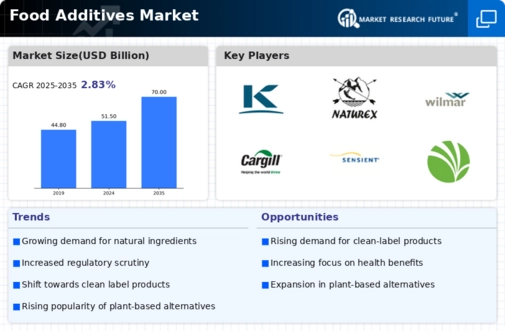
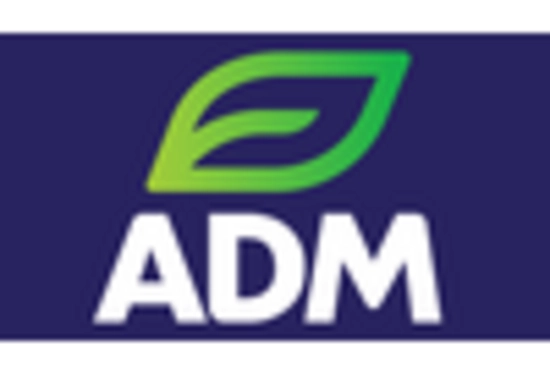

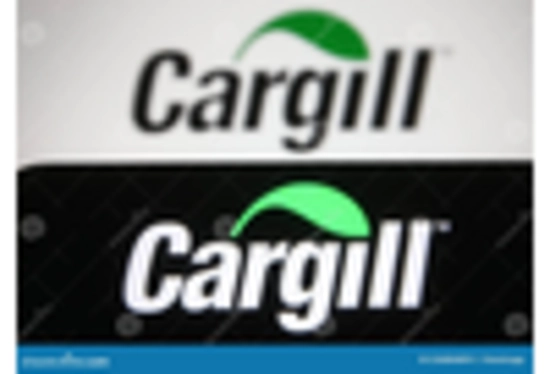
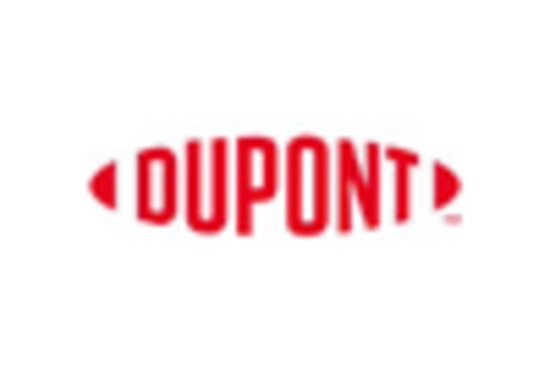
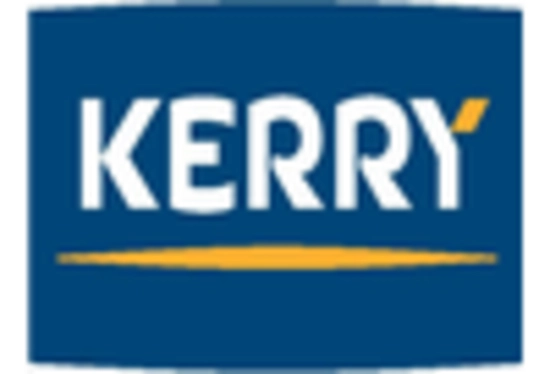
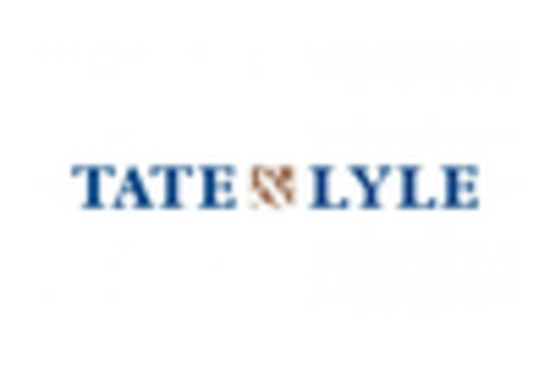

Leave a Comment